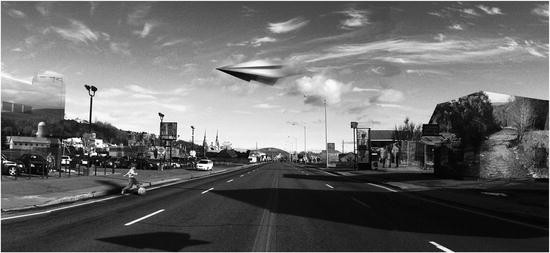Abstract
In the chapter “Implementing Transdisciplinarity: Architecture and Urban Planning at Work”, Carole Després, Geneviève Vachon and Andrée Fortin develop the aforementioned argument that architecture and planning are predisposed disciplines and professions for implementing transdisciplinarity. They argue this by describing how GIRBa (Interdisciplinary Research Group on Suburbs in Quebec City, Canada) has managed to make operational this mode of knowledge production by issuing back and forth between practice-based research and evidence-based design through collaborative processes, in order to identify strategies for countering urban sprawl and its negative consequences on sustainability. This chapter relates how a transdisciplinary program of research and action gradually and almost naturally emerged as GIRBa’s understanding of the complexity and multidimensionality of this space-related problem accumulated. The group went from the distinct production of interdisciplinary research, architectural and urban design schemes, and contractual applied research, to an integrated program of research and action where each type of knowledge nourishes each other in a truly transdisciplinary manner. The limitations and strengths of GIRBa’s work are highlighted; namely its limited power within academia to implement design solutions and policies, in contrast with its assured capacity to empower decision-makers and future generations of architects, planners and social scientists with an understanding of the complexity of urban problems, and a concrete experience of how to operate within a transdisciplinary mode of knowledge production to identify solutions. Challenges facing both academic programmes and professional organisations in terms of revising teaching models and training methods conclude the chapter.

Suburban Utopia, by Josiane Dufault & Mireille Duchesneau © GIRBa
Access this chapter
Tax calculation will be finalised at checkout
Purchases are for personal use only
Bibliography
Bourdin, A. (2009). Du bon usage de la ville. Paris: Descartes.
Després, C., Brais, N., & Avellan, S. (2004). Collaborative planning for retrofitting suburbs: Transdisciplinarity and intersubjectivity in action. In R. J. Lawrence & C. Després (Eds.), Transdisciplinarity. Futures, 36(4 Special issue), 471–486.
Després, C., Fortin, A., Joerin, F., Vachon, G., Moretti, G. P., & Gatti, E. (2008). Retrofitting postwar suburbs: A collaborative planning process. In G. Hirsch Hadorn, H. Hoffman-Riem, S. Biber-Klem, W. Grossenbacher-Mansuy, D. Joyee, C. Pohl, C.V. Weismann & E. Zemp (Eds.), Handbook of transdisciplinary research (pp. 327–341). Heidelberg: Springer.
Fainstein, S. (2000). New directions in planning theory. Urban Affair Review, 25(4), 451–478.
Forester, J. (1999). The deliberative practitioner. Boston: MIT Press.
Fortin, A., Després, C., & Vachon, G. (Eds.). (2002). La banlieue revisitée. Québec: Nota Bene.
Habermas, J. (1984). The theory of communicative action. Vol. 1: Reason and the rationalisation of society. Boston: Beacon Press.
Habermas, J. (1987). The theory of communicative action. Vol. 2: Lifeworld and system. A critique of functionalist reason. Boston: Beacon Press.
Harris, R. S. (1972). A model for designers. Unpublished manuscript, Department of Architecture, University of Oregon, Eugene, Oregon.
Healy, P. (2007). Urban complexity and spatial strategies: A relational planning for our times. London: Routledge.
Healy, P. (2005). Collaborative planning: Shaping places in fragmented societies (2nd edn.). New York: Palgrave, Macmillan.
Hirsch Hadorn, G., Hoffman-Riem, H., Biber-Klem, S., Grossenbacher-Mansuy, W., Joyee, D., Phol, C., Weismann, C.V., & Zemp, E. (Eds.). (2008). Handbook of transdisciplinary research. Heidelberg: Springer.
Innes, J. E., & Booher, D. (1996). Consensus building and complex adaptative systems. Journal of American Planning Association, 65(4), 412–423.
Lawrence, R., & Després, C. (2004). Futures of transdisciplinarity. In R. J. Lawrence & C. Després (Eds.), Transdisciplinarity in theory and practice. Futures, 36(4 Special issue), 397–405.
Lawson, B. (2001). What designers know. London: Architectural Press.
Lawson, B. (1997). How designers think: The design process demystified (3rd edn.). London: Architectural Press. (Original work published 1980).
Morin, E. (1999). Les sept savoirs nécessaires à l’éducation du futur. Paris: Seuil.
NAAB (The National Architectural Accreditating Board Inc.). (2009). 2009 conditions for accreditation. http://arch.usc.edu/content/pages/cm/uploadedmedia/2009_conditions_final_edition1253295944370.pdf retrieved 27 May 2010.
Pinson, D. (2004). Urban planning: An undisciplined discipline. In R. J. Lawrence & C. Després (Eds.), Transdisciplinarity in theory and practice. Futures, 36(4 Special issue), 503–513.
Schön, D. A. (1991). The reflective practitioner: How professionals think in action. London: Arena.
Simon, H. A. (1969). The sciences of the artificial, 1996 (3rd edn.). Boston: MIT Press.
Taylor, N. (2007). Urban planning theory since 1945. London: Sage.
Vachon, G., Després, C., Nembrini, A., Joerin, F., Fortin, A., & Moretti, G. (2007). Collaborative planning and design for a sustainable neighborhood on Quebec city’s university campus. In K. Thwaites, S. Porta, O. Romice, & M. Greaves (Eds.), Urban sustainability through environmental design (pp. 129–135) London: Routledge.
Author information
Authors and Affiliations
Corresponding authors
Editor information
Editors and Affiliations
Rights and permissions
Copyright information
© 2011 Springer Science+Business Media B.V.
About this chapter
Cite this chapter
Després, C., Vachon, G., Fortin, A. (2011). Implementing Transdisciplinarity: Architecture and Urban Planning at Work. In: Doucet, I., Janssens, N. (eds) Transdisciplinary Knowledge Production in Architecture and Urbanism. Urban and Landscape Perspectives, vol 11. Springer, Dordrecht. https://doi.org/10.1007/978-94-007-0104-5_3
Download citation
DOI: https://doi.org/10.1007/978-94-007-0104-5_3
Published:
Publisher Name: Springer, Dordrecht
Print ISBN: 978-94-007-0103-8
Online ISBN: 978-94-007-0104-5
eBook Packages: Earth and Environmental ScienceEarth and Environmental Science (R0)


